
Christ Church is part of the Church of England.
Registered Charity No. 1129036
Contact Us
- 01695 424530
- christchurchaughton@gmail.com
- Christ Church, Long Lane, Aughton, L39 5AS

The parish of Christ Church Aughton is located in the south part of the ancient market town of Ormskirk at the centre of the West Lancashire plain.
Christ Church Aughton is part of the Church of England and since 1880 Christ Church has been part of the diocese of Liverpool.
A copy of this page is available to download a PDF to read offline. Click the button to download.

St Michael’s Church
Christ Church was founded in 1867. The ecclesiastical parish of Aughton, dates back well before 1066, centred on the original parish church of St Michael’s.
Following the opening of the new railway station at Town Green in 1848, the population in the northern part of Aughton’s parish was growing. As a result, Rev W H Boulton, the rector of St. Michael’s decided another church was needed to support the community.
As a result, a one-acre site at the highest point of the road to Ormskirk was purchased and on 26 March 1867, the foundation stone for Christ Church was laid by the Lord Bishop of Chester because Aughton was, at that time, still in the Diocese of Chester. The new church, known as a chapel of ease, became the responsibility of one of the curates at St Michael’s.
It was another 10 years before the church building was consecrated on 4 May 1877. The delay was caused by a funding crisis. For more details about the founding of Christ Church, refer to the Appendix.
With the original parish of Aughton being divided between St Michael’s and Christ Church, Christ Church became a parish in 1929. The rector of St Michael’s continues to be the patron of the parish of Christ Church, giving the rector input into the appointment of any new vicar.
The Vicarage
The Long Lane vicarage was sold in 2025 and a new, more modern Vicarage was purchased by the Diocese in Chestnut Grange, Ormskirk.
Christ Church clergy over the years
Since becoming a separate parish in 1929, there have been six vicars at Christ Church:
Rev J P Hobson 1929-1956
Rev Gwynn Rhys 1957-1974
Rev Eric Bramhall 1975-1992
Canon Ross Moughtin 1992-2018
Rev Sarah O’Donoghue 2019-2024 Rev Ian Greenwood 2025-Present
The curate is a training appointment before becoming a vicar. This was a three-year appointment until 1987 when it changed to four years.
Recent curates
Rev Mark Geldard 1975-78
Rev Geoff Gillard 1978-81
Rev Chris Bray 1981-84
Rev Peter Thorn 1984-87
Rev Frank Cain 1988-92
Rev Janet Roberts 1992- 1998*
Rev Mark Stanford 1998-2002
Rev Michael Follin 2002- 2006
Rev Jeremy Thomas 2006-2010
Rev Phil Weston 2010-2014
Rev Sarah O’Donoghue 2015-2019
Rev Jackie Davies 2021-2024
* Interesting fact: Rev Janet Roberts was among the first group of women to become an ordained priest in 1993.
On a clear day the view from the church tower is incredible – from Anglesey to the Barrow shipyard, from Daresbury in Cheshire to Winter Hill just beyond Bolton. It’s a long climb to the top – some 110 steps – but it’s worth it to enjoy the spectacular view!
The tower opens to the public on a Saturday in September. In addition to climbing to the top, visitors can stop half-way to see the belfry where up to 8 bells weighing a total of 3.6 tons are rung each Sunday. Notably, the first peal of bells in the church tower sounded on 19 September 1878.
For more information about the next tower visit, contact the church office.

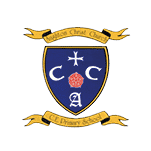
The original Christ Church School was built in July 1874 on the half acre alongside the church. A newer building was built in 1970.
For more details about the school, with whom we have a strong partnership, visit:
https://www.aughtonchristchurch.lancs.sch.uk/
Uniformed organisations are an important part of Christ Church. The 1st Aughton Scout Group was formed in 1919 and the Girl Guides formed in 1945.
In 2001 the new Scout and Guide Headquarters Building was opened by the Bishop of Warrington following the destruction by fire of its original wooden building.
Although the new Christ Church Primary school was opened in Long Lane in 1970, the original school building next to Christ Church was used by the school until 1994.
In 1999, the Church Council bought the old school building site to be developed for serving the local community. After extensive problems with planning, the foundation stone for the Ministry Centre was laid in November 2009 by Rt Rev Richard Blackburn on his first day of ministry as a Bishop, and the centre was opened in 2010 by the Bishops of Liverpool and Virginia.
The Ministry Centre is a key resource. It’s used for regularly scheduled church groups such as our Toddler group, Luncheon Club and LYFE (Living Your Faith Every Day) groups, and for local community events. You can learn more about these activities in the Connect & Grow section.
Ross Moughtin, former Vicar of Christ Church Aughton (1992 – 2018) has written a booklet about our Ministry Centre that tells an inspiring story stretching over 18 years. This inspiring journey was marked by setbacks, determined opposition and a remarkable venture of faith.
Copies, complete with colour photos are available at a cost of £4 (to cover printing costs) at the back of church or in Cafe Vista.
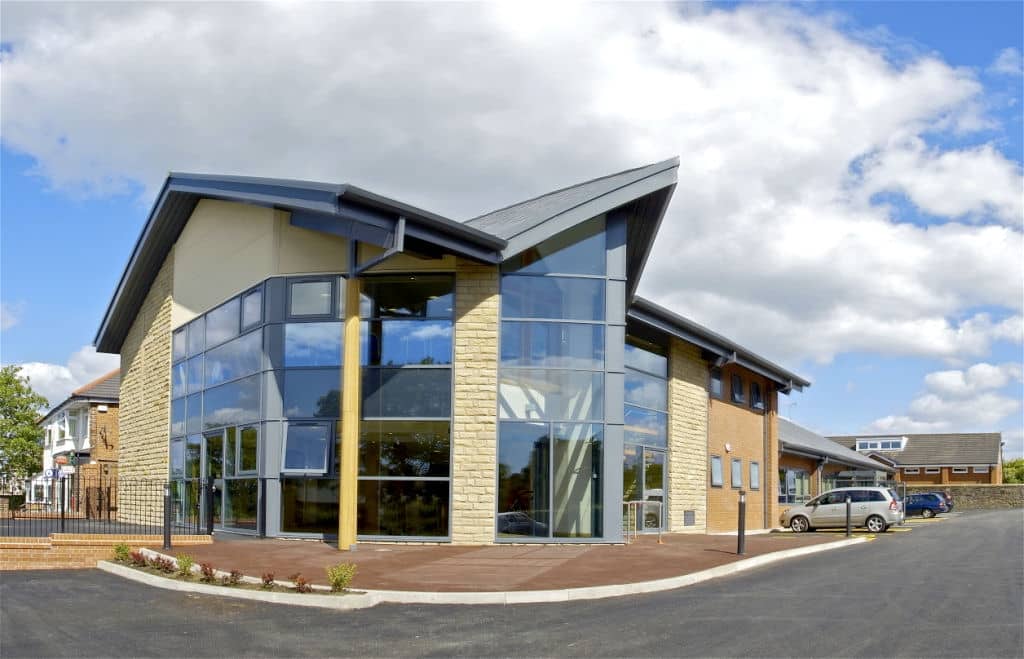
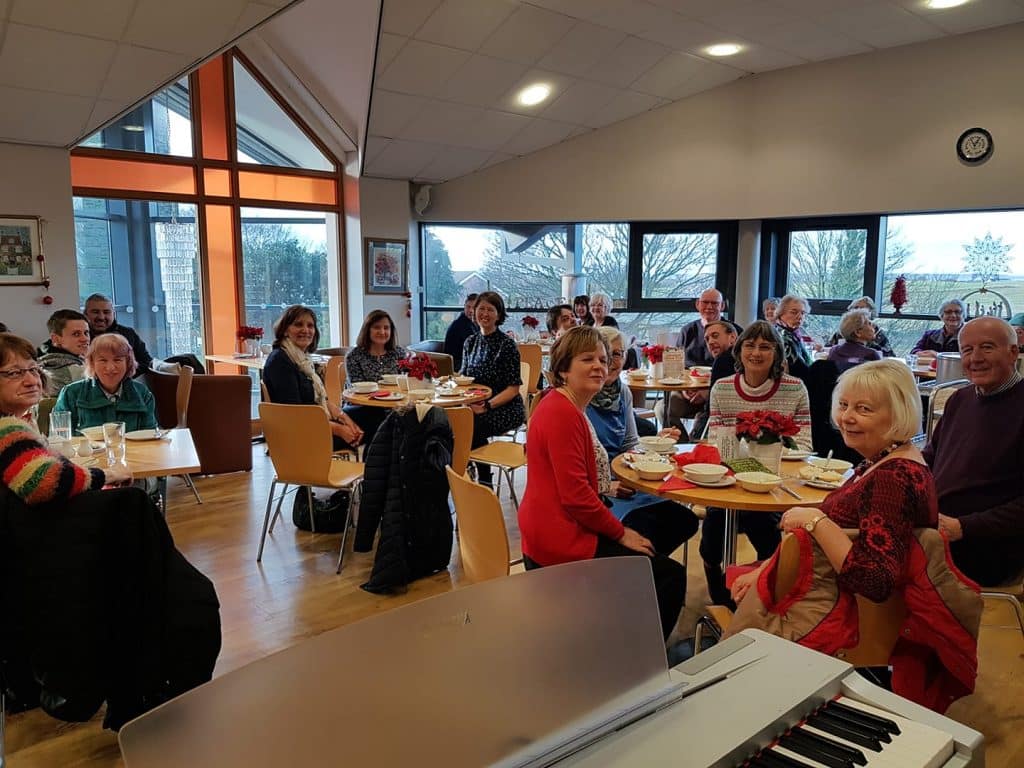
A key part of our Ministry Centre is Café Vista, which is located upstairs and can be easily accessed by lift. All are welcome Tuesday to Friday, from 10.30 to 3.30 pm and on Saturday mornings for breakfast. Staffed by volunteers, Café Vista serves lunch and light refreshments.
A large meeting room (which can be divided into two sections) and a smaller meeting which is regularly used for café overflow are also situated upstairs.
On the ground floor, the Centre consists of the foyer, church office, a large hall with full audio-visual facilities, toilets and a small meeting room.
Other churches and community groups are encouraged to use the centre and take full advantage of its location overlooking the farmland of the West Lancashire plain.
There’s a large car park alongside the Ministry Centre while the centre is easily accessed by public transport. The 311 bus stop is adjacent to the church site while Aughton Park railway station is 700m along Long Lane.
If you wish to hire the Ministry Centre for any event, contact the church office on 01695 424530 or via email: christchurchaughton@gmail.com
“They shall grow not old as we that are left grow old: Age shall not weary them, nor the years condemn.
At the going down of the sun and in the morning, We will remember them.”
During the First World War, Christ Church was still part of the parish of St Michael’s Aughton, so the names of those who fell in the Great War are inscribed on the War Memorial at Town Green, which was erected in 1922. This memorial was in large part paid for by George Walmsley Blundell of High Wray, Aughton. It was he who also gave the land for the construction of the Comrades Club in Ormskirk. As George stood at the dedication of the memorial in 1922, he could scarcely imagine that the name of his young son would appear on this same memorial 25 years later.
Buried in Christ Church’s grave yard from the First World War in Commonwealth War Grave Commission graves, are:
Eric Alan Clarke
Herbert Crompton
Charles Owen
R.D. Mallinson
George Brighouse Warlow
T. Witter
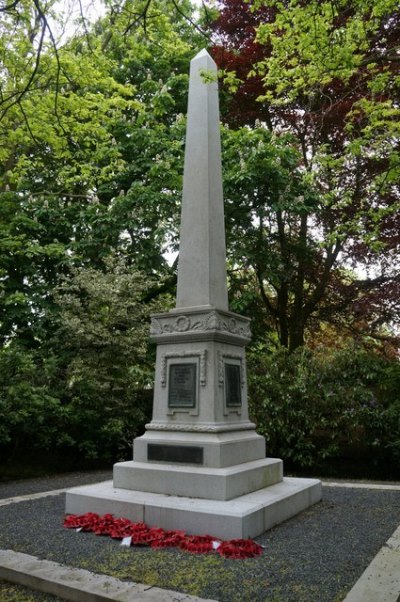

Christ Church has its own memorial for the Second World War, dedicated by the Archdeacon of Liverpool, Ven C F Twitchett, on 30 June, 1946. Also present was the Vicar, Rev J P Hobson, and Captain Jones of Cottage Lane Mission. It is located inside the church.

Daniel grew up in Parrs Lane, attending Aughton parochial school in Holt green – what became St Michael’s school – and Ormskirk Grammar School. A keen football player, he played for his school as well as for Aughton Park rangers FC. He was also vice-captain of his school cricket team while he was a bowler for the Ormskirk cricket club first team.
Daniel was a great friend of Ben Stockley, who later like himself served with the Royal Air Force Volunteer Reserve as a pilot and who like himself would be killed in a distant land.
On leaving school Daniel went to work for Ormskirk post office. As soon as he was 18 years, he volunteered to join the RAF – his choice. He was delighted to report to Lord’s cricket ground, before being posted to Cambridgeshire.
A decision was made for Danny to be a bomber pilot and so he was sent to Canada for pilot training, sailing from Liverpool to Montreal – and then by train to Saskatchewan. A new flying school had been opened at Swift current, the No. 39 Service Flying training School which operated 1941-1944.
At the age of just 19 Daniel started training in December 1942. The flight log showed long and arduous training. In fact, he had completed the number of flying hours required and he was just one week from the end of his course. On Thursday, 6th May 1943. his fourth flight of the day, he went on a night flight. However, his engine cut out in flight and he was killed along with his 27-year-old instructor, Leonard George Gray. The two were buried side by side in the Mount Pleasant cemetery. The service chaplain taking the service, Rev John Reuss, was to later serve at St Mark’s Scarisbrick. After his death, he made sergeant.
Clearly this was a great blow to family, receiving the telegram which would have passed through Ormskirk Post office where Daniel worked. His father expressed his grief in the pages of the Ormskirk Advertiser.
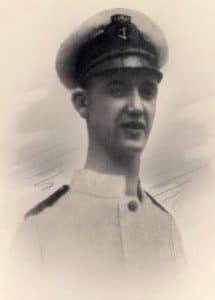
From 1911 they lived in Hodder Street in Everton and it was here in 1918 that his mother died of influenza. On leaving school he was a clerk, presumably on the docks. In 1923 Edward married Doris Gertrude Baker, Dolly, at St Lawrence Kirkdale – with one of his brothers as best man. The following year 1924 Eric was born.
Edward decided to become a Marconi radio operation and trained at the Marconi school in Seaforth. By1927 he was a first radio officer with the Silver Line of London, a shipping line with about 20 small cargo ships, less than 5000 tons. They were entirely on foreign service: the ships did not include UK ports of call. Its offices were in Chapel Street, Liverpool. He sailed with MV Silver Cedar 4,354 tons.
In 1938 his family moved from Fazakerley to Ferney Bank, in Liverpool road close to the Royal Oak. A married man with two sons at the outbreak of the war Edward was offered a shore job on account of his age, being nearly 40. The offices were after all not far from his home, in Liverpool. However, Edward volunteered to stay on as a first radio officer with Merchant Navy.
On 5 October 1941 his ship, MV Silvercedar, sailed from New York to Manchester, carrying a cargo of heavy steel billets, a large amount of food and three Beaufighter planes secured on deck. Edward was the first radio officer with his second radio officer Thomas McDonough. They sailed to Nova Scotia to join 51 other ships assembling for convoy to Liverpool Convoy SC 48. What they didn’t know was that waiting at the Mid-Ocean Meeting Point was a ‘Wolf Pack’ of 8 German U-boats that was eventually to sink 11 of them without loss to themselves.
In the early hours of 15 October, the first ship to be attacked was MV Silvercedar. At 4.35 am, there was a terrible explosion as the ship was torpedoed on the starboard side, just forward of the engine room. Both starboard lifeboats had been destroyed by the explosion but the crew managed to launch one of the port boats and a raft. She sank in seven minutes on an even keel.
The task of the radio officer was critical – to send out distress signal and position, essential if the crew was to be rescued. They had just these seven minutes between being hit by a torpedo and the ship going under the water. Radio officers had done their job because the 27 survivors were picked up within the hour, in the dark, by the MIMOSA, a Free French Corvette.
Sadly Edward along with his colleague Tom and another 19 men died
When the ship was overdue, his family kept going to Chapel Street for news. Eventually they were finally told that he was missing presumed drowned but no death certificate was ever issued, causing real problems of entitlement for his family. His wife, Doris, went grey overnight; she died in 1990. At the time of his death his sons were his sons were 17 and 7.
The elder son entered submarine service against the protests of his mother. Thankfully he survived the war even though he was torpedoed twice, in Atlantic and in Russian waters.
Doris continued to live in Liverpool Road. She became one of the dinner ladies at Christ Church School along with Minnie her sister in law. She died in 1983.
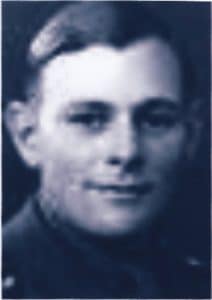
His father was wealthy, a cotton broker who lived at Elderslie in Formby Lane, now known as High Wray. His mother – Ann Maria – died the day after he was born, just 35 years old. His second name Minto is a reference to her family.
George grew up at Elderslie, where there were butlers, maids, grooms and stable boys. His father married Ethel and they had two children – Mary and John. The family were members of Christ Church, Aughton – even though their family grave is at St Michael’s. They joined the church choir while George and especially John were active in Christ Church scouts.
Tom Halsall, who for many years served as verger at Christ Church, can remember visiting Elderslie with some trepidation as a young member of the church choir. Tom’s Dad told him to be on his very best behaviour, to watch his Ps and Q’s! And not to speak unless spoken to.
Sadly, when George was just 10, his father died in July, 1927, buried in the Blundell grave at St. Michael’s, Aughton. Three years later George was sent to a public school in Repton, Derbyshire. His housemaster wrote that “during the whole of that time his conduct has been irreproachable. He is a gentlemanly boy of high principles, greatly liked and respected by his fellows and by the staff; goes on to add – not an athlete…”
At school he decided he wanted to become an architect because he enjoyed art, especially drawing. Then in 1935 he went up to Christ Church Oxford, to read history. While at Oxford – as the prospect of war was looming – George joined the university army training corps.
Nevertheless he was still determined to be an architect and on leaving Oxford he attended the Liverpool University School of Architecture for 12 months before beginning employment as an architect. By then, war had broken out with Germany and George was called up. In January 1940 he was commissioned as an officer into The King’s Regiment a Liverpool regiment, – and then to the Army Air Corps, to serve in India, at Parshar.
In November 1942, George was transferred to 1st Parachute Battalion, training in Delhi. He then went to Egypt where the 4th brigade was formed under General Hackett, where he became part of Battalion headquarter staff. Because of his skill in drawing, George became an intelligence officer. He produced excellent maps, often drawn in a hurry – both clear and accurate.
General Hackett’s headquarter staff moved to the North Africa desert and then to Taranto before going inland into Italy, George being very much involved in the planning and execution of fast-moving campaign. He was then returned to England for training – to cover the Normandy landings should his brigade be needed.
During this time he introduced one of his brother officers, James Clegg, to his step-sister, Mary. They were to marry after the war, later to serve in the colonial service.
George was part of the Arnhem campaign in Holland. He parachuted to the west of Arnhem on the second day of the campaign. Already things were going very wrong and he dropped under fire. Some close colleagues were killed as both parachutists and aircraft shot down. In a couple of days things were getting desperate with the Battalion headquarters being just 200m from Hartenstein hotel at Oosterbeek, featured in the film Bridge too Far.
It must have been a difficult time for George, not a natural soldier, for during this time the Battalion had to fight off repeated and violent German attacks with everything they had at their disposal. Every man was needed for the defence, “Brigadier Hackett did the job of any private soldier; he fired a rifle, lobbed grenades, and led the odd bayonet charge – it was a most unusual situation for a Brigade Commander to find himself in,” observes the regimental records.
General Hackett himself writes: “I was impressed with the stout hearts and accurate grenade throwing of the Brigade Intelligence section, particularly after the Intelligence officer, Captain Blundell, was shot and killed at about 20 yards range.
George’s body was later found by his brother-in-law to be, James Clegg, lying in a slit trench. James himself became a prisoner of war. George was buried near where he fell at Oosterbeek war cemetery, Netherlands, aged 27.
Thomas Burke, son of Frank and Anne Burke, grew up in Scarth Hill Lane. A member of the merchant navy and sailing with S.S. Assyrian (Liverpool), he lost his life when his ship was torpedoed on 19 October, 1940, aged just 21.
We have very little information on Thomas. If you can help, please contact the church office

All of his schooling was at Christ Church, leaving at the age of 14 to work first as an office boy at Dickinson, Watson and Parker solicitors and then for the local council, in the Rates department.
A keen sportsman, being over 6 ft tall, he played tennis and cricket. He also painted watercolours.
On the very day that war was declared, 3 September, 1939 Leonard – already a member of the Territorial Army – was called up, joining the Royal Army service corps in Southport.
In a matter of weeks he was in France where he celebrated his 21st birthday. However, just seven months later, at the fall of France, he managed to escape some two weeks after the Dunkirk evacuation.
During his annual leave in 1941, Leonard married Hilda Edge at St John’s Burscough – whom he met at night school – moving into Derby Villa in Liverpool Road.
At this time Leonard took his commission and to begin with worked in welfare because of his experience in administration. However, he later volunteered for work in bomb disposal.
Just before he was made a captain Leonard was killed on 9 February, 1945, while out with a convoy in Holland. He was 26. Leonard is buried in Sittard, Holland.
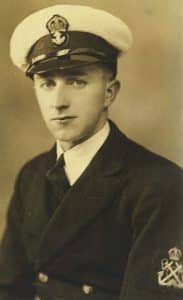
An active member of St John’s Ambulance in Ormskirk, he was known for his sense of humour. On leaving school he became an apprentice fitter and turner at Cammell Lairds but at the outbreak of the war, he volunteered for the royal navy, becoming an engine room artificer.
In March, 1940 Ronnie was assigned to Royal navy cruiser HMS Orion in which he saw action in the Mediterranean. In May 1941 Crete was taken by German parachutists and there was an urgent need to evacuate 16,000 troops from the island.
This was a highly dangerous operation with HMS Orion carrying 1000 troops aboard when she left for Alexandria in Egypt.
The ship was soon attacked by diver bombers. One member of the crew recalled: “It was hell. Our ship was hit twice. One shell fell through six decks before exploding. By the time we reached safety, 260 on board were dead and another 300 injured. We were attacked by high level bombers and Stuka dive bombers which came streaking out of the sun. Ammunition parties dashed to and from the hoists to keep up with the never ending demand. Then the Orion was hit. Our A turret was blown to bits and the gun barrels of the B turret were bent upwards by the force of the explosion. The captain was hit and died soon afterwards. Then, at 10am, a single Stuka streaked out of the sun. It was too quick for the gunners to take aim. Then a flash, a sudden black out and an eerie silence as all machinery stopped told its own story. An armour-piercing bomb had penetrated the bridge, passing through every deck below and exploded in the 4in magazine not far from where I was ferrying cordite.”
A total of 112 sailors were killed, along with 150 soldiers, when the ship was bombed in one of the most heroic rescue operations of the Second World War.
Ronnie was badly injured and when the badly damaged ship finally arrived at Alexandria, he was immediately taken to the casualty clearing station on the jetty. There he died – aged 29 years. His brother Wilfred soon afterwards had a baby, a boy who was named in honour of his fallen brother, Ronald John. Ron now lives in south Liverpool.

On leaving school he started work in a shop in Ormskirk before starting his own business.
He married Amy Scarisbrick, the daughter of the publican of the Dog and Gun in Long Lane, at Christ Church in March 1940, the very day of his medical for the army! As you would imagine, they held their reception at the Dog and Gun.
The following month, April 1940, Harry enlisted in the Royal Army Service Corps as a mechanic. No sooner had he enlisted that he helped receive evacuees from Dunkirk.
In 1941 Harry transferred to the 1st Air Landing Brigade (gliders) and was away for two years in North Africa, where he was trained to land in glider with vehicle. There he was promoted to lance corporal. For much of the next three and a half years Harry was away but he did arrive home at the Dog and Gun totally unexpectedly on Christmas Day, 1943. At it happened he met fellow paratrooper Joe Mawdsley– one going on, other returning from leave.
As a member of the Para brigade Harry was not involved on D Day but was involved with Market Garden in September 1944, the attempt to take the bridges over the Rhine including Arnhem. Before embarking he was given 24 hours leave and so he was able to spend just a few short hours with his wife.
Harry landed on 18 September, the second day of the operation, landing to the west of the bridge in a glider along with his vehicle – but his company never managed to break through. On 22 September, as the battle for Arnhem went against the allies, his platoon found themselves isolated in a thicket. His sergeant went out to find the way back to Allied Lines but was critically injured. Harry volunteered to rescue him but was badly wounded by shrapnel from an exploding shell. He was retrieved by medical orderlies but died soon after from his wounds.
Harry was reported missing, believed wounded and a prisoner of war. Amy continued her husband’s business, trying to find out the location of her husband. Sadly she was finally informed on 11 October 1945 that he was presumed dead, aged 29 years. Harry is buried in the Arnhem Oosterbeek War Cemetery along with another Aughton man, George Minto Blundell. His widow remarried, another paratrooper and lived in Hallmoor Close until she died in 2006.
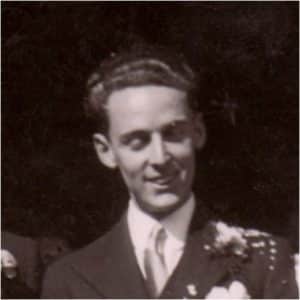
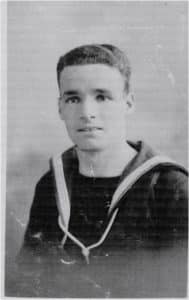
His elder brother, Tom, was very much a sportsman, especially swimming. On leaving school he worked at Blacklers stores in Liverpool as a driver before joining the Royal Navy in 1935. He regularly sent postcards and stamps from Malta and Gibraltar for his younger brother. He was posted as a torpedo man on the Royal Oak and his family visited him when Royal Oak sailed into Liverpool. In 1938 Tom married Louise, the sister of a fellow sailor from Manchester.
At the outbreak of war his family considered Tom to be safe. The Royal Oak was no longer suited to front-line duty and was anchored at Scapa Flow in Orkney, Scotland. So it was a huge shock when on 14 October 1939, it was torpedoed by a German submarine. Some 833 were killed that night or died later of their wounds. One was Tom, aged just 28. Obviously this was a devastating blow to his family. His father was heartbroken and he died exactly one year later on 14 October 1940. His wife Louise stayed with her family in Denton, where she had a hairdresser’s business.
Soon after this Jim volunteered to join the RAF as a driver. Again his family were not particularly anxious and he stayed in this country. However, one night in June, 1942 while on sentry duty with a good friend, there was an accidental discharge of a colleague’s rifle which killed Jim. Just 32 years, he was buried in Kirkdale Cemetery.
His wife never remarried. Two other Duncalf sons saw active service: Harold in the Army and Charles in the Navy. Thankfully they survived the war. Their mother, Mrs. Duncalf, still resident in Long Lane, died in 1977.
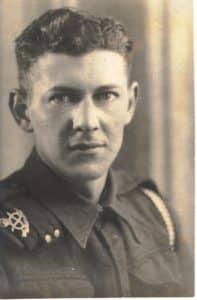
A member of the congregation at Christ Church, James attended Christ Church School and on leaving Ormskirk Grammar School he found employment at Ormskirk post office as a sorting clerk and telegraphist. He enjoyed working behind the counter, meeting people.
At the outset of the Second World War, James was conscripted into the South Staffordshire Regiment and posted to Northern Ireland where he was promoted to Sergeant.
He was involved in the Normandy landing in June 1944. He was involved in virtually the last battle of the Caen campaign, crossing the Orne south of Grimbosq to turn the German flank. However, while laying radio communications under shell fire, he was badly wounded by shrapnel.
He died on 9 August and is now buried in the St. Manvieu war cemetery at Cheux in Calvados, France.
Arthur Hyder lived in the post office, then in Long Lane, alongside where the church school is now located. This followed the death of his mother, when his father – along with his sons Arthur and George – moved in with his sister in the post office.
Arthur served in the Royal Navy as an engine room artificer. He soon saw active service and when his first ship was sunk, he was strafed in the water. He was badly hurt in the leg and one of his lungs had to be removed.
On recovery he refused a shore job, preferring to go to sea again. This meant he could only sail in a ship with a doctor on board. So he was posted to the engine room of the battleship HMS Prince of Wales, soon after its commissioning at the Cammell Laird shipyard in Birkenhead. The ship was sent to Singapore to serve as a deterrent to Japanese aggression. However, it was attacked by Japanese military aircraft off Kuantan, Malaya on 10th December 1941. 327 sailors lost their lives, including Arthur, as the battleship was sunk.
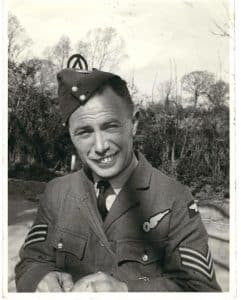
Hugh and Harriet Jones. He was one of four children. As a family they were active members of Elm Hall Drive Methodist church, where his father Hugh was a deacon.
A keen footballer, John went to Quarry Bank school and on leaving school he went to work at an accountancy firm in Liverpool.
Along with his good friend Jim Cotter, John ran the church youth club where he met Gaynor who was not only Welsh but came from the same part of Wales as John’s family. As war approached, Gaynor moved with her family from Mossley Hill to Liverpool Road Aughton, opposite the Royal Oak pub.
John was 27 when war broke out in 1939 and against the wishes of his mother he wanted to join up. Once he checked that he could take his final accountancy exams after the war, he volunteered for the Lancashire Yeomanry and was stationed at Pembroke Dock at the far end of south Wales. He was there when in July 1940 he and Gaynor were married. Following the service, John and Gaynor went to Liverpool by train but because he only had a day pass, they arrived at Lime street and immediately took the same train back to Pembroke Dock
While at Pembroke Dock, John made another big decision, to volunteer for the RAF where he was trained to became navigator/bomb aimer in Bomber command. Allocated to 21 Squadron, he was based at various airfields in east England. Gaynor took nearby rented accommodation to be near her husband.
To begin with, the Squadron had few operations – there were not enough planes. Then in May 1942 the squadron was issued with American planes, Lockheed Ventura known as “the Flying Pig”. Not an easy plane to fly. That September the squadron moved to two adjoining airfields in Norfolk, RAF Feltwell and RAF Methwold, just five miles apart.
Then followed some difficult raids in Holland. In November 1942 his plane ditched – that’s all we know. Then on 6 December the squadron had a breakthrough, a raid on the Phillips factory in Holland put key parts of the factory out of action. This was deemed a success, even though 9 of the 47 bombers were shot down by German fighters. In fact, the Crown Film Unit arrived at Feltwell to make a short film about the Phillips raid. Some the aircraft which returned had sustained damage and so needed repair; other planes needed servicing.
John was ready for some leave – Gaynor was now pregnant. Then on Thursday 10 December John joined a short flight from Methwold to Feltwell for servicing. he crew took a few passengers along with the crew including “Jock” Rutterford who went to pick up his new boots from the stores. The pilot was F/Sgt Garnet H. Turcotte, American from Detroit flying with Canadian Air force. An exceptional pilot, Turcotte had just been promoted to Warrant Officer.
The plane was due to return to Methwold late morning. Two men were going to have a lift to go back to Methwold but they gave up waiting and cycled there instead. When they arrived back at Methwold they were watching the plane approaching the airfield when suddenly it dived out of view. There was an explosion and a ball of fire rose into the air. One of those two men who decided to cycle said to the other “It’s lucky that there’s only one person on board.” “No” said the other. “It’s full.” Six men were killed, including John. Jock’s boots survived the crash but sadly Jock, like everyone on the plane perished. This was just a terrible accident and it was never fully explained.
Along with John the young American pilot and one aircrew were buried in the local churchyard at St Nicholas, Feltwell. Gaynor now pregnant went to back to Liverpool Road and four months later in April 1943 gave birth to a daughter, Bronwen Davies (named after her father). Today each member of Gaynor’s family has Davies in their name as a tribute to their father, grandfather and great-grandfather.
Frank Gibson Smith, the son of Frank and Jane Smith, grew up in Aughton Park, at “Windy Ridge, Liverpool Road. A captain, 1st Field Regiment, Royal Artillery, he died 19 March, 1944 in Italy, aged 28. Frank is buried at Cassino War Cemetery.
We have very little information on Frank Smith. If you can help please contact the church office.
George Brian Smith was the elder son of Mrs. and Mr. A C Roodhouse JP, Clieves Hill.
George played for the Ormskirk Rugby team. As a farmer in Rhodesia, immediately volunteered for the Northern Rhodesia Regiment. He was killed in Somaliland on 18 August 1940.
We have very little information on George Smith. If you can help please contact the church office.
Benjamin Herbert Stockley was brought up in Long Lane. His father, Herbert, worked as a railway porter at Aughton Park station where he met his wife, Constantia. Later his family moved to Parrs Lane.
Ben was a pupil at Ormskirk Grammar School before getting a job at Ormskirk Post Office. He was a great friend of Danny Ashcroft, who also lost his life as a RAF pilot.
Benjamin, known as a quiet person, was in the choir at St Michael’s, Aughton.
He enlisted in the RAF and was made a Pilot Officer, posted to North Africa. It was there in January, 1945, he was killed in a plane crash at the age of 21.
He is buried in the El Alamein War Cemetery.

His first posting was on the elderly aircraft carrier HMS Eagle, which saw action in South Africa and in the Mediterranean where it provided cover for the Malta-bound convoys.
In August 1942 it was hit by four torpedoes from U-boats and sunk. It must have been a frightening experience for Henry, below decks in the engine room However, he was one of the survivors, picked up from the sea by the escorting warships.
Henry’s connection with Aughton was through his girlfriend Dorothy Bampton: they had met on the train. Her father built much of Black Moss Lane area, especially Hallmoor Close. They were married in February 1944 at Ormskirk Parish Church and set up home in Black Moss Lane.
Henry joined the newly launched sloop HMS Lapwing, where he served in the engine room as chief petty officer. The ship took part in the D Day landings before being ordered to take part in the most dangerous area of all – what Winston Churchill called “the worst journey in the world”. This was escorting the Arctic convoys, a journey Henry was going to do nine times.
In March 1945 – with the end of the war in sight, Lapwing was torpedoed on approaching Kola Inlet in Northern Russia. She was hit amidships by a torpedo and sank in 11 minutes. Of the 219 in the ship’s company, only 61 survived. Sadly Henry this time was not one of the survivors. This was a terrible shock to his wife, Doreen, who soon gave birth to their son, Michael.
Doreen never remarried, continuing to live in Black Moss Lane and working for Cunard until her retirement. Michael emigrated to New Zealand in 1974, where he was later joined by his mother – then aged 78, She died in 2006
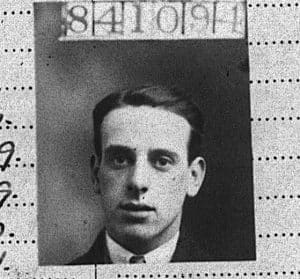
This was the question asked in the CONSIDER for November 2013. One of our readers, Richard Houghton looked into this and discovered that in the official war records his name is misspelt as Thomas Ullivers. And so we were able to discover that Thomas Ullivero fought as the youngest member of those we remember in Aughton and yet died as the oldest.
Thomas enlisted for the army during World War 1, in 1915. His father was the publican of the Philharmonic Pub in Hope street, Liverpool. However, he gave his wrong birth date. He was just 16. But not only was Thomas under age, this would-be soldier was just 5 1½ inches with a 31 inch chest. Assigned to 8th Irish battalion The Kings Liverpool Regiment, he was sent to France and within one month he was in battle at Givenchy. The battalion despite good leadership casualties suffered 253 casualties.
However, in November 1915 Thomas was sent home as under age. At the beginning of 1918 he returned to France in a pioneer regiment, not fighting as such but digging trenches, preparing fortifications and laying minefields.
Just ten weeks later during the German Spring Offensive Thomas was wounded in action and sent back to England, eventually to be demobbed to his mother’s house in Queens Drive, Liverpool. For the next 20 years Thomas worked for the Cunard Line as a steward, serving for much of that time on the Scythia.
When World War II broke out Thomas was moved to be a steward on a former whale factory ship converted to carry cargo, MV Sourabaya. Such boats were an easy target for U-boats and in October 1942 the ship was torpedoed off Greenland. 76 men perished including Thomas, aged 43.
We still do not know why Thomas Ullivero appears on our war memorial. It’s possible his aunt Elizabeth Ullivero, who was in service to an Ormskirk family, attended Christ Church.
John Neville Wheldon son of Harold and Mildred Wheldon, grew up in in Black Moss Lane, attending our church school. His family later emigrated to New Zealand. His wife, Anne, came from Burscough. Serving as a wireless operator, John was a sergeant in the Royal Air Force Volunteer Reserve. He was killed on 2nd January, 1945, aged 25.
We have very little information on John. If you can help please contact the church office.
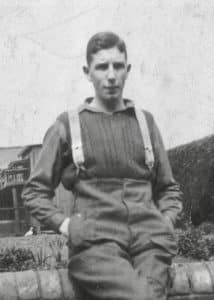
George was a pupil at our church school and at Wigan Road School. On leaving school he became an apprentice turner at Hesfords. A tall man, some 6’2” George was known for his great of humour.
At the outbreak of the war George was 16 and he was “always talking about the RAF.” His father was in the Home Guard, As soon as he could, once he turned 18, George naturally volunteered for the RAF, becoming an aircraftsman 1st class of Royal Air Force Volunteer Reserve. He was initially stationed at RAF Odiham, allocated as ground crew to Bomber Command, number 18 Squadron.
In 1942 the Squadron, equipped with the Blenheim light bomber, moved to North Africa where it took up day bombing duties. This meant using forward airfields which were frequently attacked.
The Allies managed to push Germans out of North Africa to Sicily, where the squadron began to use the Grebin Airfield captured from Germans. However, the squadron had had a tough time and so on 25 September it was stood down from operations until further notice. Reequipped with new American Boston bombers, the crews started formation flying training. This meant learning to fly these new aircraft in groups of three.
However, on the second day of training there was a collision between two aircraft as they prepared to land. One just managed to land safely but the other Boston crashed just off the aerodrome and all the occupants, the pilot, the gunner along with George were killed.
We assume that George, although usually ground crew, was with the plane in order to test the new instruments. He, aged just 20, was buried close to where he fell, in Catania, Sicily. His parents died within six months of each other in 1956 and are buried in our church yard.
Here’s the basis of a talk given to the Ormskirk National Trust Support Group in March, 2018.
When people visit the Ministry Centre they invariably comment on it being a beautiful and well-planned building. What they do not realize is that it took some 17 years to build. And more, there’s a story to be told.
The period between March 1999 and December 2006 was in many ways the most difficult, trying and failing at first to get the building through planning; contending with an organized opposition and being savaged in the local press.
The Ministry Centre story is very much a repeat of what happened when the rector of Aughton, Rev W H Boulton, tried to build Christ Church. He too faced organized opposition and was challenged in the Ormskirk Advertiser.
Eventually, some ten years after the foundation stone was laid, Christ Church was eventually consecrated.
The story begins before the Norman conquest.
The parish boundary between Aughton and Ormskirk has an important part to play in the building of Christ Church. Such boundaries were very important, much more so than today and the boundary between the ancient parishes of Aughton and Ormskirk is along Hurlston brook which flows along Dyers Lane and through Coronation Park.
This is an ancient boundary. In fact, it used to be called Mere brook or in the original Anglo-Saxon, gemere brook meaning boundary. The brook actually cuts through part of Ormskirk Parish Church churchyard which would suggest that the boundary predates the building of Ormskirk Parish Church.
In fact, this boundary is the reason for St Anne’s RC church being where it is. In the 1840’s the vicar of Ormskirk refused permission to have a Roman Catholic church built in his parish. However, Rev William Henry Boulton, the Rector of Aughton gave his permission and so St Anne’s was built on the Aughton side of Hurlston Brook.
Up to 1834, when Rev Boulton became Rector of Aughton, not much happened in this self-sufficient rural parish – apart from the civil war skirmish (or battle) on 20th August 1644.
Rev Boulton is the hero of this story. He served as Rector of St Michael’s for 50 years and 6 months. The eldest son of R Boulton of Harrock Hall, he was raised in a well-to-do family and educated at Trinity College, Oxford. Moreover, he managed to marry a rich widow. An Evangelical in his views, he was said to have had a genial and benevolent disposition. He was a justice of the peace for the county.
As rector he enjoyed a high income but it would have been expected of him to use this for the benefit of his parishioners. In a tribute made to him towards the end of his ministry, his parishioners wrote: “He spared neither himself nor his wealth for the welfare of his parishioners and his neighbours. Christ Church stands as a lasting monument to his generosity, and that of his family, who jointly contributed £4000 to its construction.
It was during his incumbency that a major event took place in his parish, representing a massive technological breakthrough and one which would completely transform his parish along with the entire world. On 2 April, 1849 the railway station at Town Green opened. Now Aughton was connected to the wider world and this would soon lead to a rapidly growing population.
In fact, there was already a movement to build a new church to the north of the parish. In 1848, prompted by some members of his parish, Rev Boulton wrote to Colonel Plumbe Tempest the Patron of St Michael’s and the principal landowner of the district, requesting a new church be built. This would be a chapel-of-ease; that is, not a parish church in its own right but a daughter church of St Michael’s.
It seemed that he was given a strong push by Thomas Culshaw, a church member with some influence and much energy, who himself petitioned Colonel Plumbe for a new church. In his letter he offers the Colonel some practical suggestions for financing this church.
Mr. Culshaw cites three reasons for a new church. Firstly, some 329 parishioners lived more than two miles from their parish church, St Michael’s. It seems that Ormskirk Parish Church doesn’t count – even though it would have been very close to where these residents lived. However, he argues that this new church would need to be ¾ mile from the Ormskirk boundary. Moreover, Mr. Culshaw argues that these parishioners do not want to go to Ormskirk because it belonged to the high church Oxford Movement, which he calls Puseyism.
Finally he cites “vice of all descriptions – the prostitution, the drunkenness and pilfering carried on in this neighbourhood, together with the ignorance and heathenism of the population.” He continues: “For of late, crime and immorality have been much on the increase, partly owing to the great influx of the Irish and partly owing to the great want of clerical supervision.”
Some things never change.
In a further letter Mr. Culshaw offers some land close to St Anne’s church and money.
However, Colonel Plumbe did not give his permission partly because Lord Derby was already building two new churches for Ormskirk – at Newburgh and Westhead and also because he perceived differences between Mr. Boulton and this group of parishioners
However, in 1865 a new opportunity arises when suddenly, it seems out of the blue, some land is made available for a new church. In a circular written to his parishioners Mr. Boulton writes;
“It has accordingly been determined that immediate exertions should be used to build a new church for about 400 persons, and for this object a very eligible site of a statute acre of land, or rather more, on Aughton Moss, has been generously offered as a gift by Edward Houghton, Esq., of Lytham.”
He argues that the present parish church, St Michael’s, was unable to accommodate all the worshippers on a Sunday. He points out that the census of 1861 recorded the number of inhabitants within the parish as 1,869 with 360 houses. That number had increased from the previous census by between 400 and 500 inhabitants and approximately 100 more houses.
Here Rev Boulton takes a risk, even a step of faith The estimated cost of this new church is £6000 but only £4000 has been collected. He decides to go for it.
Architects are appointed: W. & J. Hay of Oxton Road, Birkenhead. They had designed St Hilary, Wallasey in 1859. Christ Church was designed in the “flowering decorated” style.
Clearly this was an ambitious project in that the church was designed to hold over 400. It was later to be known as the little cathedral on the hill – ambitious to say the least.
So on 26th March, 1867 the Christ Church foundation stone was laid by the Lord Bishop of Chester, Rt Reverend William Jacobson. (The Diocese of Liverpool was only formed in 1880).
A bottle, hermetically sealed, containing copies of the ” Ormskirk Advertiser,” ” London Standard,” ” Liverpool Daily Post,” “Courier,” and ” Mail,” with current coins of the realm, were placed in the customary cavity under the stone.
The Ormskirk Advertiser wrote:
“Aughton is within easy reach of Liverpool and merchants from that world-renowned seaport who wish for a country seat where they can take their families away from the foul and murky atmosphere of the big town, could scarcely pitch upon a more suitable spot.”
The ceremony took place on a windy but sunny afternoon. The crowds caught a glimpse of Brunel’s great ship the “Great Eastern” steaming out of Liverpool. This is clearly the age of massive technological advance. The Great Eastern was the largest ship ever built at the time. Great as it was, that ship could not and did not last; after distinguished service it was broken up, over at New Ferry in 1889.
Building begins with most of the stone quarried locally in the Aughton Delph. Caen stone, being easily workable, was used for font, pulpit and reredos. Within four years, the church had been completed outside but inside was just an empty shell. Moreover, the churchyard had not yet been levelled.
This was 1871 and Rev Boulton was facing a financial crisis with expenditure rising to £7440. The project was already £2650 overspent and some £1700 was still needed for completion – and that was not counting the £1000 required to endow the living. At this point the rector is taking flak, not least from those who disputed the need for such a new church. Rev Boulton wanted to press on while it was reported that a group of parishioners “refuse to expend any more money except in actually opening the church.”
The Ormskirk Advertiser suggests that Lord Derby is called in to arbitrate. A pamphlet is issued calling for a crisis meeting between the rector and his parishioners. He was presented with two options. The first was for the Rector to raise another £3500. This would give him freedom of action including the option not charging for pews. The second was for a committee to take over the completion and then the running of the church: this option would need just £1700, less than half of Rev Boulton’s target.
Incidentally, it seems that later in 1871, a license was given for the performance of divine service at Christ Church until consecration – and so things clearly started moving.
However, somehow Rev Boulton prevailed and he managed to find the rest of the finance so that Christ Church is fitted out in some style.
On 4th May 1877, the Bishop of Chester returns for the consecration of Christ Church as a chapel-of-ease, even though the building had been in use since 1872. This is because a church building is only consecrated once all outstanding debts are paid. The total cost of building Christ Church was £12000 with some £4000 being donated by Rev Boulton and his family.
Incidentally in 1872 Long Lane Baptist church was built to hold 180 people; with the school room having room for 100 children. The cost for this building was £600. In 1874, Christ Church School was opened.
Inside the church there are many figures, both in wood and stone, and many faces. You can see the face of the Bishop of Chester who laid the foundation stone, Rt Rev William Jacobson, above the pulpit. On the facing side of the chancel appears the head of Queen Victoria. The head of Rev William Henry Boulton is on the outside of the building, near the top of the tower. Exposed to the elements, he is now corroded.
A ring of eight bells was installed in 1878, weighing a total of 3.6 tons. The first peal was sounded on Thursday, 19 September that year.
On the 8th Anniversary of the Consecration, May 1885, Christ Church was lit by gas – the entire cost being borne by Mrs. D. Williams who lived in ‘Artegas’ on the corner of Long Lane and Prescot Road.
In April, 1885 Rev Boulton died in post. The memorial window to him and his wife Anne, who died three years earlier, is situated in Christ Church on the south side of the sanctuary. It has as its theme, “Feed my sheep”.
A local poet wrote the following satirical verse in 1872 entitled St. Long Lane.
Serene and calm, bold and high,
Rises the tower of St. Long Lane,
Proudly uplifting to the sky
Its glittering pinnacles and fane.
Through bygone years, the wint’ry blast
Hath beat around its breast in vain;
Firm as a rock its bulwarks last
This noble pile of St. Long Lane
Afar the ship-toss’d sailor sees,
O’er crested wave and watery main,
Welcome as is propitious breeze,
The distant tower of St. Long Lane.
The foot-sore traveler stays to view,
With eager glance and optic strain,
Marks well the course he must pursue
By Magic Tower of St. Long Lane.
But yet, withal, some spell doth hold,
In deep mysterious hidden chain,
Groined arch, and tower, and turrets bold,
Of Mystic Church of St. Long Lane.
And though high soars her lofty head,
Beacon of ocean and of plain,
Her aisles are silent and no prayers are said
In hapless fabric of St. Long Lane.
Unused, unopened, and unblest,
A weird-like influence to her walls pertain :
Where feathery songsters pipe themselves to rest,
The only choristers of St. Long Lane.
And winters pass and summers go.
And sunlight shines and sunbeams wane,
O’er cloistered church forlorn below
The Gothic tower of St. Long Lane.

Christ Church is part of the Church of England.
Registered Charity No. 1129036
© Christ Church Aughton 2022. Website brought to life by Masterpiece Creative Design.